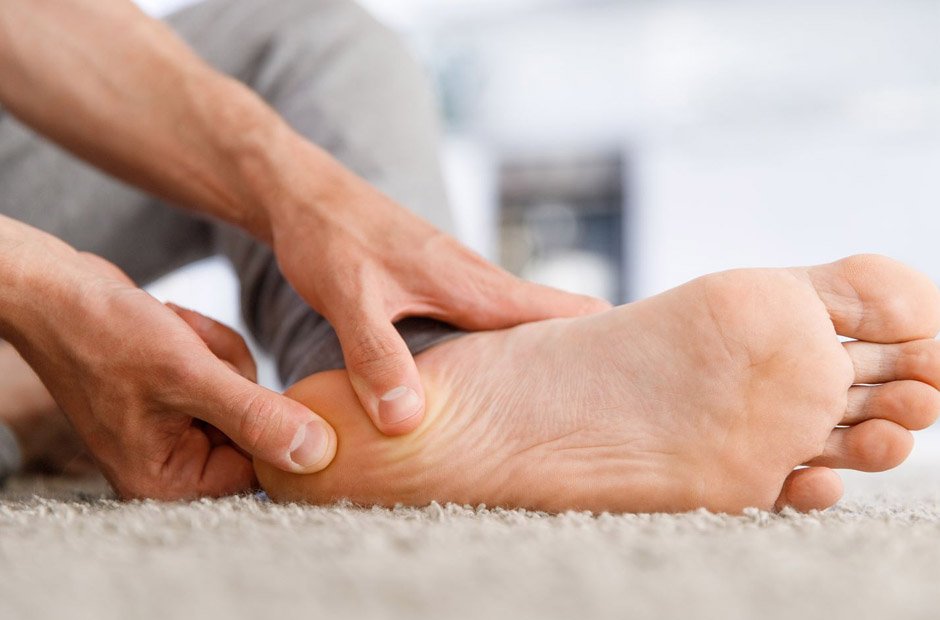Plantar fasciitis is a common and often painful condition that affects the heel and bottom of the foot. It happens when the thick band of tissue that crosses the bottom of your foot, known as the plantar fascia, becomes inflamed. Particularly after extended hours of standing or after taking your first steps in the morning, this irritation may cause severe agony. Restoring normal foot function, reducing discomfort, and accelerating recovery are all possible with an appropriate treatment strategy for plantar fasciitis. This comprehensive guide will explore six effective treatment strategies for managing plantar fasciitis and regaining your quality of life.
Understanding the Causes and Risk Factors of Plantar Fasciitis
Usually, repeated tension and strain on the plantar fascia ligament results in the development of plantar fasciitis. Running, walking, and prolonged standing are examples of activities that put a lot of strain on the foot and can exacerbate the problem. Furthermore, certain foot types—like flat feet or high arches—can make plantar fasciitis more likely to occur. Two other important risk factors are wearing inappropriate footwear and being overweight. The first stage of creating a focused treatment strategy is identifying these causes and risk factors. You can reduce the possibility of recurring episodes and encourage long-term foot health by taking care of the underlying problems.
Stretching and Strengthening Exercises
Incorporating targeted stretching and strengthening exercises in your everyday routine will help to alleviate plantar fasciitis symptoms greatly. Stretching routines that concentrate on the plantar fascia and calf muscles can help reduce stress and increase the range of motion. Stretching the calf muscle often entails bending forward gently while standing with your hands on a wall, placing one foot forward and the other back with the heel on the ground. Strengthening exercises like toe taps and towel curls may help improve the stability and support of the foot muscles.
Footwear and Orthotics
Selecting the appropriate footwear is essential for the treatment of plantar fasciitis. Properly fitting, cushioned shoes with sufficient arch support can assist in spreading pressure more evenly over your foot, lessening the strain on the plantar fascia. Athletic shoes with shock-absorbing soles are particularly beneficial. Furthermore, further support and alignment may be obtained with specific orthotic inserts, which is particularly beneficial for those with aberrant foot mechanics. A podiatrist can assess your gait and foot anatomy and offer the best orthotics to relieve your discomfort and stop further injuries.
Rest and Activity Modification
Treating plantar fasciitis requires giving your feet enough time to recover. Without enough rest, the plantar fascia is subjected to constant tension, which can worsen inflammation and slow recovery. You should adjust your activity to reduce the strain on your feet. This might include eschewing high-impact workouts like sprinting or leaping in favor of low-impact ones like cycling or swimming. Inflammation and discomfort can be decreased by applying ice to the afflicted region for fifteen to twenty minutes several times a day. To help reduce swelling and pain even further, you may elevate your feet while you’re at rest.
Physical Therapy and Professional Treatment Options
For plantar fasciitis, seeking expert care from a podiatrist or physical therapist may provide specialist care and direction. A Podiatrist in Manhattan can offer a comprehensive evaluation of your condition, including gait analysis and foot structure assessment. Additionally, they could recommend cutting-edge therapies like specially made orthotics, night splints, and exercises designed for your particular requirements in physical therapy. To reduce inflammation and accelerate recovery, physical therapy sessions can include manual treatments, stretching, strengthening exercises, and modalities like ultrasound therapy.
For persistent cases, a podiatrist may also recommend extracorporeal shockwave treatment (ESWT), which stimulates healing in the plantar fascia using sound waves.
Lifestyle and Weight Management
Maintaining a healthy lifestyle and managing your weight can have a significant impact on the treatment and prevention of plantar fasciitis. Carrying more weight puts extra strain on your feet, making the problem worse and slowing down the healing process. A healthy weight may be attained and maintained with the help of a balanced diet and frequent, low-impact exercise, which helps reduce the pressure on the plantar fascia. The healing process may also be aided by including anti-inflammatory foods, including fruits, vegetables, and omega-3 fatty acids.
In addition, maintaining enough hydration and abstaining from excessive alcohol and caffeine use helps support good foot health. These lifestyle adjustments can support long-term plantar fasciitis alleviation and work in conjunction with other treatment approaches.
Conclusion
In conclusion, treating plantar fasciitis involves a multifaceted approach that addresses the underlying causes, provides adequate support, and promotes healing through targeted exercises and professional interventions. Pain relief and improved foot function can be achieved by being aware of the risk factors and implementing effective methods, such as wearing proper footwear, adding stretching and strengthening exercises, and seeking expert treatment. Additionally, maintaining a healthy lifestyle and managing weight can play a crucial role in preventing recurrence and supporting overall foot health.
















